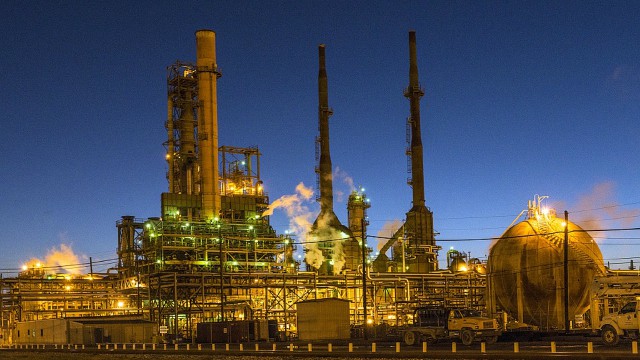Crescent Point Energy Corp. (TSX:CPG)(NYSECPG) has one confusing chart. Despite oil trading solidly above $50/bbl, Crescent Point shares are down almost 25% since the start of the year in a sharp divergence from spot crude. Why is one of Canada’s most productive drillers being completely discounted by the market? I’ll give three reasons for the sell-off based on Crescent Point’s 2017 guidance and possible U.S. protectionist measures.
2017 guidance points to 10% production increase from 2016
In its recent 2017 guidance, Crescent Point predicted 183,000 boe/d exit production growth, or 10% higher on an absolute basis than 2016’s figures.
Furthermore, the company also guided a 31% increase in 2017 capex of $1.45 billion with 89% of the budget allocated towards drilling and development and 11% devoted to infrastructure and seismic investments across core areas. Of note: this sizable jump in capex for Crescent Point follows 2016’s hectic trend, which featured 1.44 million metres and 590 new wells drilled — more than any other producer in Canada.
The market’s reaction was muted
With the majority of Bay Street quite bullish on Crescent Point and the upbeat guidance that is pointing to stronger production growth this year, why then is Crescent Point being discounted by the market?
My first theory is that the market believes Crescent Point will fund this new increase in capex by way of yet another equity issuance (for those new to Crescent Point, one unenviable trait of the company is that of a “serial issuer” of shares with a bought deal seemingly once per year).
Furthermore, with over 52% of the company’s financial obligations coming due in the next two to three years, I can certainly see why management might be hesitant to tap the debt as opposed to the equity markets.
Secondly, the guidance also points to a payout ratio of 100% funds flow from operations based on WTI of $52/bbl and CAD/USD at $.75. I would also surmise that this high payout ratio might seem restrictive to some as there is still prevailing skepticism over OPEC’s ability to cooperate.
If, of course, OPEC does not deliver on its promises, as it has in the past, we will see WTI test $50/bbl once more and Crescent Point’s dividend and capex plans in jeopardy. One important thing of note is that prior to Crescent Point’s dividend cut in 2015, the company’s payout ratio was roughly 62%, or well below the recently guided number.
Finally, with the very real possibility of a border tax on Canadian imports under the Trump administration, there is a general sense of uncertainty surrounding domestic oil names. While many Canadian producers are selling off in response to the uncertainty, the resulting fallout from the border tax along with the specter of further equity raises and dividend cuts have created a perfect three-pronged assault on Crescent Point shares.
The bottom line
A bet on Crescent Point here is essentially a bet on oil prices staying about $50/bbl and dovish U.S. policies regarding Canadian oil. If we do see significant reduction to surplus supplies, you can expect Crescent Point to make a recovery off the back of stronger oil. However, the company at this point seemed to have decoupled from the crude markets, and any perceived deviation from OPEC to the production cut, a further equity raise, or a restrictive cross-border tax would entail further selling in Crescent Point stock.








